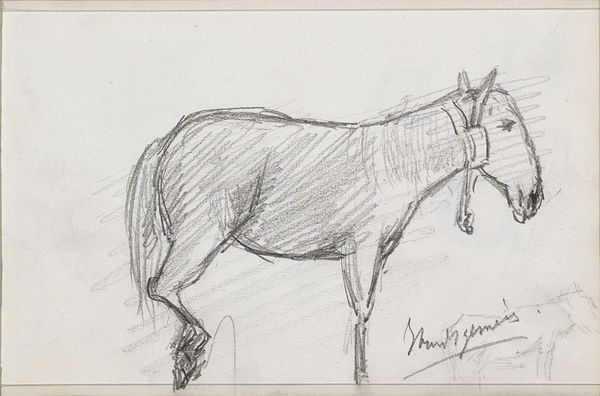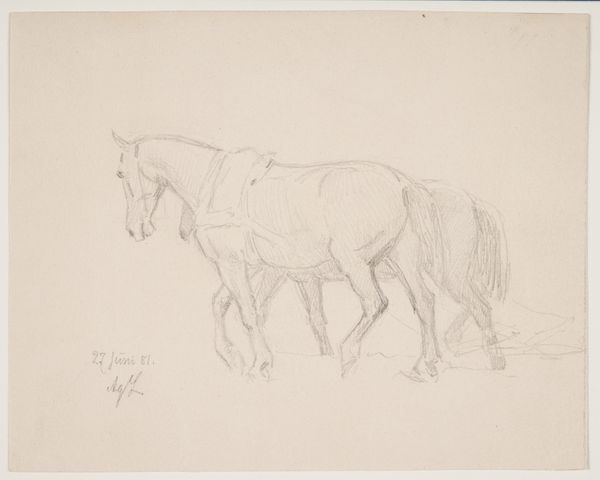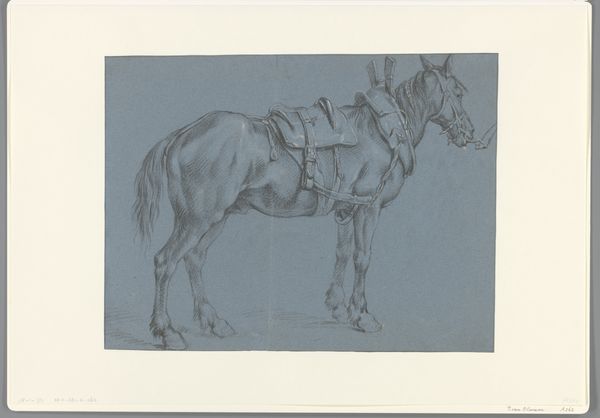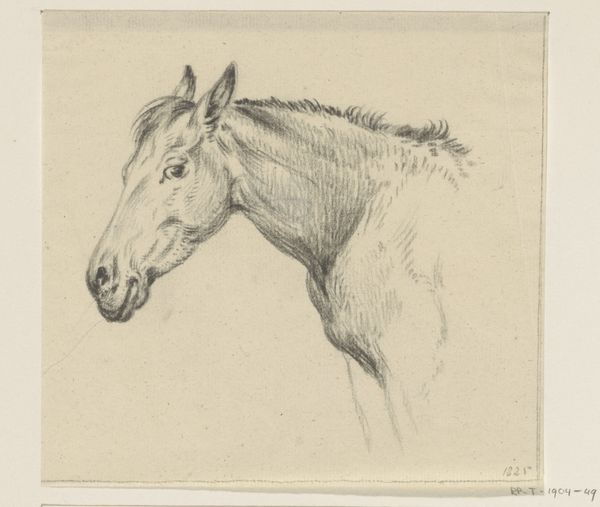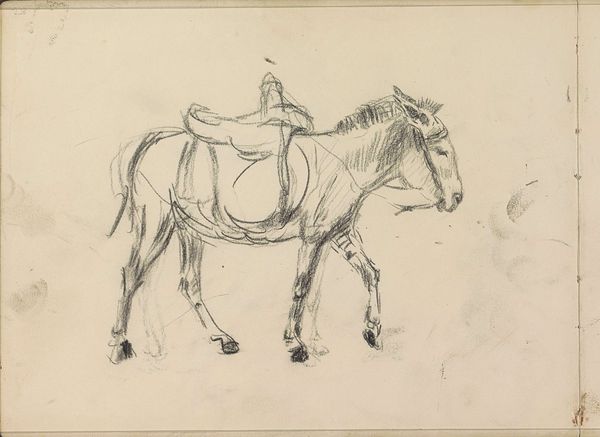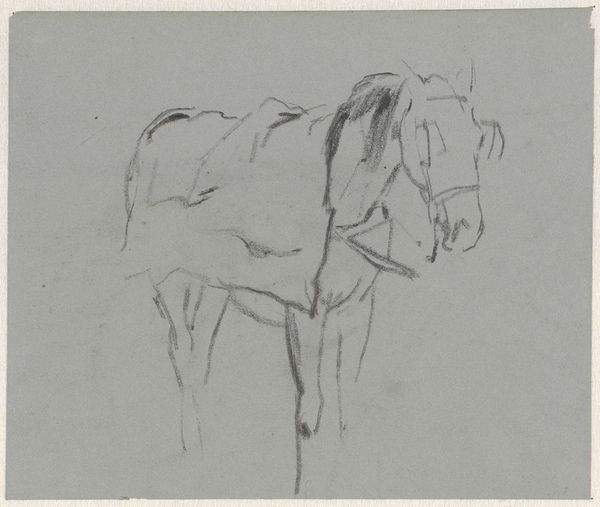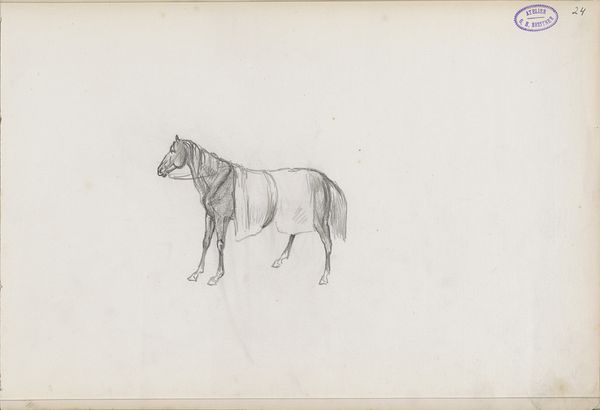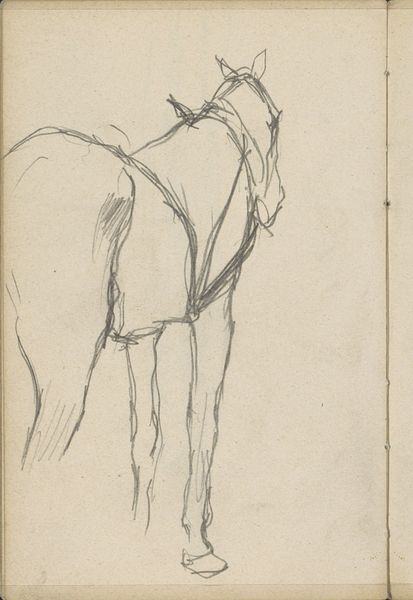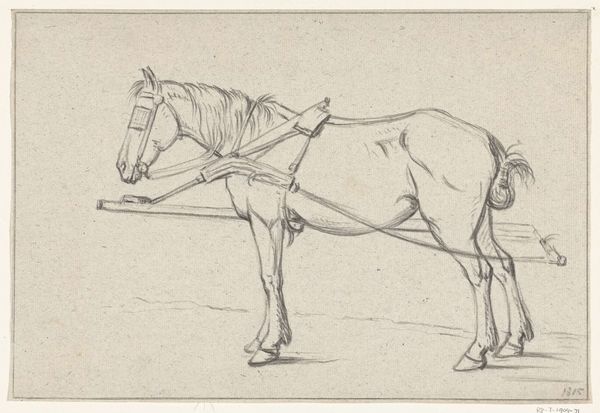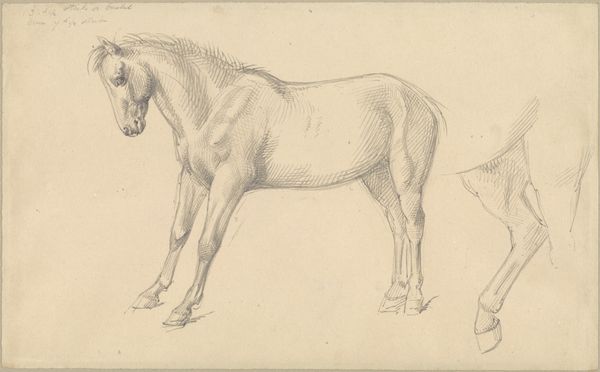
drawing, pencil, graphite
#
drawing
#
pencil sketch
#
landscape
#
form
#
pencil
#
line
#
graphite
#
realism
Dimensions: 172 mm (height) x 254 mm (width) (bladmaal)
Curator: Before us we have Agnes Lunn’s "En hest," a graphite and pencil drawing completed in 1881, here at the SMK. Editor: It’s very faint, almost like a ghost. A pale horse rendered in subtle graphite lines. Somber, in a way, like a memory fading. Curator: Interesting observation. Horses, throughout history, have carried significant symbolic weight, representing everything from war and conquest to freedom and nobility. Editor: Yes, but what I notice first is the process itself, the marks on the paper. This looks like a preliminary study. You can almost feel Lunn working through the form, searching for the right line. The textures too - the smooth body versus the dark, heavily rendered harness – suggest close observation. Curator: The harness is rather imposing, isn't it? Think of the labor this horse performs. The harnessing, in itself, symbolizes control, duty… perhaps even constraint. This creates tension in conjunction with the horse as an archetypal symbol of freedom. Editor: Precisely. And look at the simple means used here. Pencil and graphite on paper were readily accessible tools, reflecting the reality of artistic production at the time. It speaks volumes about the conditions under which this artist worked. Did Lunn view this drawing as a valuable artwork, or simply as a means to an end? The question itself reveals so much about the material conditions of artistic practice. Curator: I see it as a layering of meanings— the visible subject, certainly, but also what the horse comes to represent, consciously or unconsciously through its form. The work touches upon these universal narratives within human history. Editor: Ultimately, I see the act of sketching— of *making* —as paramount. To focus on the materiality is to refocus the discourse away from rarefied artistic visions and instead think about process. The availability of means, the skill involved, and the resulting object itself. Curator: An intersection between object and process – beautifully stated. Editor: Indeed, much food for thought!
Comments
No comments
Be the first to comment and join the conversation on the ultimate creative platform.

